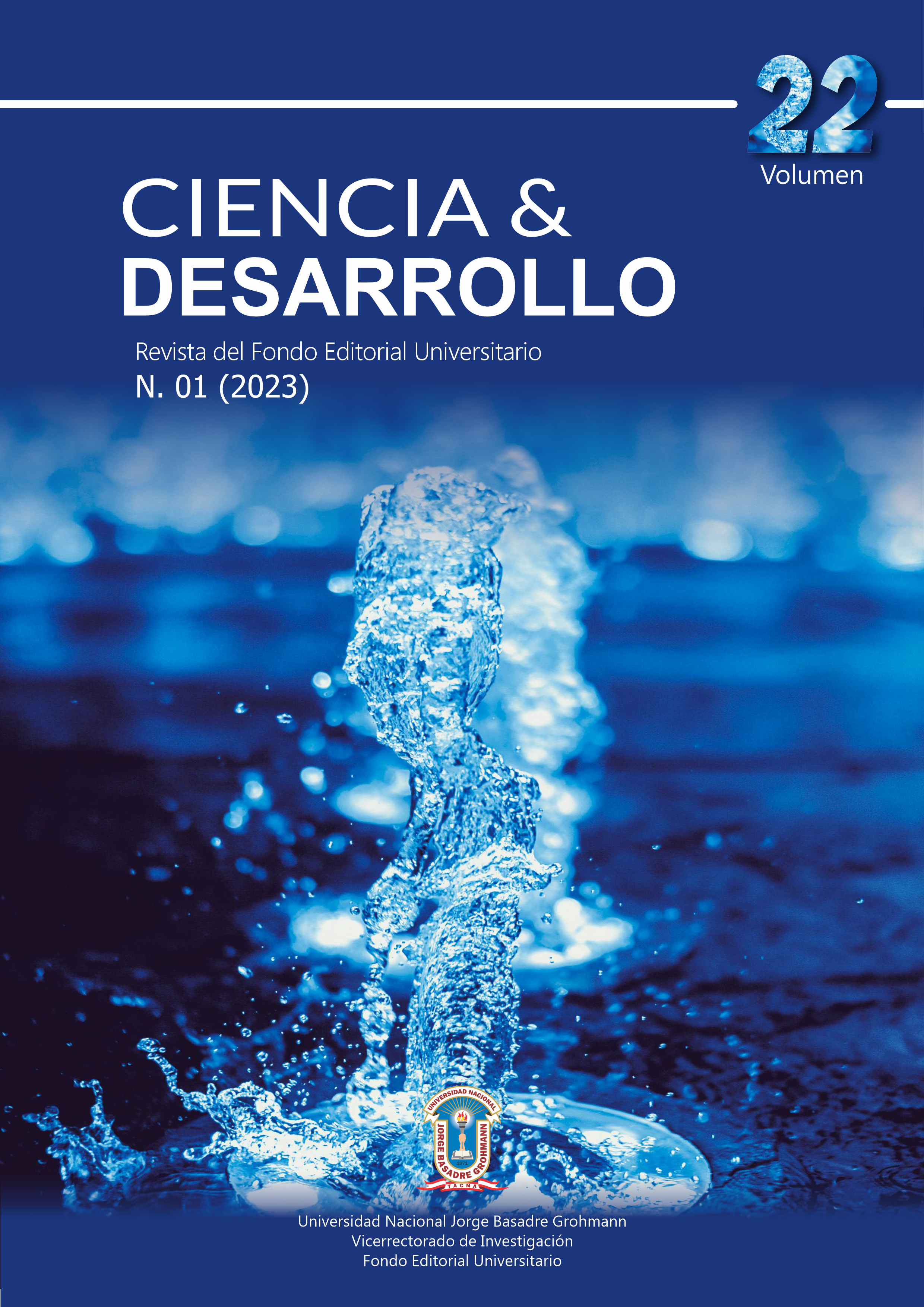Caracterización tecnológica y geomecánica de la formación Huaylillas para fines de uso ornamental en la ciudad de Tacna
Main Article Content
Abstract
The study area focuses on the Huaylilllas formation located around the city of Tacna, where no zones with potential ornamental use have been identified. A geological-geomorphological and geomechanical mapping was carried out with the aim of providing a technological and geomechanical characterization.
Twenty-two geomechanical stations were conducted to obtain a characterization, revealing that the Lower Huaylillas member is poor rock and the upper member is fair to good rock. As it approaches the Millo Formation or the contact with the Lower Huaylillas, the rock's RMR quality decreases.
The physical and mechanical properties of 20 samples were determined, yielding the following values: porosity (1.6-32.4%), dry density (1.5-2.3 g/cm3), absorption (0.7-20.4%), specific weight (2.0-2.5 g/cm3), and uniaxial compressive strength (7.98-91.45 MPa). Consolidated tuff with vitroclastolithic lithology and Vitrophydic, Eutaxitic, and Perlitic texture of rhyolitic to trachytic composition was identified.
This thesis concludes that the lower member is of poor quality and the upper member of the Fm. Huaylillas is of better quality considering the halo of alteration (15 to 20 m.) of the contacts of the Fm. Millo and the Fm. Huaylillas Inferior, 02 zones are located as quarries located in the Caramolle ravine and in the ravine near Km 17 of the Tarata highway.
Keywords: Tuffs, Huaylillas, Characterization, physical-mechanical properties
Downloads
Article Details
References
Acosta, H., Alván, A., Mamani, M., Oviedo, M., & Rodriguez, J. (2011). Geología de los cuadrángulos de Pachía (36-v) y Palca (36-x), escala 1:50 000. Boletín N°139 Serie A, Carta geológica Nacional, 10.
Adnan A. et al., 2. (2017). Engineering Properties of Volcanic Tuff from the Western Part of Yemen. Engineering Properties of Volcanic Tuff from the Western Part of Yemen, 5.
Alberto Pool Ramírez & Juan La Riva Sánchez. (2001). Rocas ornamentales en el Perú. BOLETÍN N" 9 Serie B: Geología Económica, 26-32.
Alejandra Díaz Valdiviezo & José Ramírez Carrión. (2009). Compendio de rocas y minerales industriales en el Perú.
Alonso, F. J. (2013). Durabilidad de materiales rocosos.
American Society for Testing Material C-170. (s.f.). Ensayo para determinar la resistencia a la compresion.
American Society for Testing Material C97. (2008). Ensayo para determinar las propiedades mecanicas y físicas.
American Society for Testing Material C-99. (s.f.). Ensayo para determinar la resistencia a la tracción.
Bieniawski, Z. (1989). Engineering Rock Mass Classifications. New York: Wiley.
Brown, E. (1981). ISRM (1981) Suggested methods for rock characterization, testing and monitoring.
Deere, D. U. (1989). Rock Quality Designation (RQD) after twenty years. Mississipi: US Army Engineer Waterways Experiment Station.
E. Hoek, P. K. (1998). Support of Underground Excavations in Hard Rock. Rotterdam: A.A. Balkema.
Flores A. & Sempere T. . (2002). Avances sobre la historia geológica del valle de Tacna. XI Congreso Peruano de Geología, (pág. 10). Lima.
G.J., McMillan, W.J., and Robinson, N.D. (2001). Industrial Minerals with emphasis on Western North America. 37th Forum on the Geology of Industrial Minerals (págs. 149-155). Victoria, B.C.
Gonzáles de Vallejo, L. (2002). Ingeniería Geológica, Pearson Eduación. Madrid, España.
Jacay, J., Flores, A., Sempere, T., & Fornari, M. (2004). Características depositacionales del Volcánico Huaylillas. Congreso Peruano de Geología, Sociedad Geologica del Perú, 463-465.
Maroto, G. F. (2018). Rocas industriales y ornamentales. Cantabria, Cantabria.
McNall, G. (2003). Soil and Rock Construction Materials. Taylor and Francis e-library.
Meilan, D. (1984). Conveniencia de la utilización de las tobas volcánicas en la construccion de viviendas ecónomicas (Tesis de Maestria). Universidad de Guanajuato, México, Buenos Aires.
Ministerio de Transportes y Comunicaciones. (2016). Ministerio de Transporte y Comunicaciones.
Monge, P. R. (2004). Mecánica de Rocas: Fundamentos e ingeniería de taludes. Vigo.
Morales Cabrera, D., Rodríguez Copare, J., & Machaca Mamani, E. (2019). Potencial de las rocas ornamentales en las regiones. CIENCIA & DESARROLLO.
N. Barton, R. L. (1974). Engineering Classification of Rock Masses for the Desing of tunnel Support.
Navarro Dominguez, R., Arriaga, L., & Baltuille Martín, J. M. (2017). Caracterización de los principales tipos de mármol extraídos en la comarca de Macael (Almería, Sureste de España) y su importancia a lo largo de la historía. España: Boletín Geologico y Minero.
Paul Marinos y Evert Hoek. (2000). GSI: A Geologicallly driendly tool for rock mass strength estimation.
Pino, A. (2003). Estratigrafía y paleografía del intervalo Paleozoico superior-Cretáceo inferior en el extremo Sur del Perú (Área Mal Paso-Tacna). Universidad Nacional Jorge Basadre Grohmann, 144.
Sánchez Fernández, Agapito Wilfredo; Rosell Solís, Walter; Raymundo Salgado, Tito. (2000). Memoria explicativa de la revisión geológica en los cuadrángulos de Punta Bombón (35-s), Clemesí (35-t), Ilo (36-t), Locumba(36-u), La Yarada (37-u),Tacna(37-v), Huaylillas (37-x), Juli (33-y), Pizacoma (34-y) e Isla Anápia (33-z) [Escala 1:100 000]. Instituto Geológico Minero Metalúrgico., Direcciòn de Geología Regional. Lima: Instituto Geológico Minero Metalúrgico.
Servicio Geológico Mexicano. (22 de Marzo de 2017). Obtenido de Museo Virtual: https://www.sgm.gob.mx/Web/MuseoVirtual/Riesgos-geologicos/Depositos-piroclasticos-y-rocas.html
Terzaghi. (1946). Rock Defects
UNE-EN-14147:2004. (s.f.). Determinacion de la resistencia al envejecimiento por la accion de S02 en presencia de humedad.
Valdez, P. A. (2019). Caracterización Geomecánica de las Ignimbritas de la formación Huaylillas del cerro Intiorko, con fines de cimentación (Tesis de Maestria). Universidad Nacional de San Agustín de Arequipa, Tacna.
Vallejo, L. I. (2002). Ingeniería Geológica.
VALLEJO, L. M. (1978). Aplicación de las clasificaciones geomecánicas al estudio. HENARES, REY. GEOL., 1: 71-76, Pag. 71.
Wilson y García. (1962). Geología de los cuadrángulos de Pachía y Palca. Bol. N°4. Comición Carta Geológica Nacional, 82.
